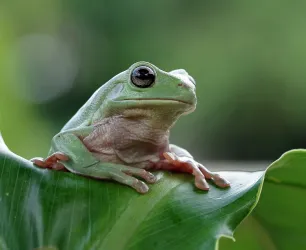Website of “Kanha National Park” . This website is Registered under the Private Travel Agency name Seven Safar Tour & Travels. We organize Hotel, Safari and Tour Package bookings in Kanha National Park.
The beautiful forest of Kanha National Park was home to the Gond, Baiga tribes, and all animals in Kanha National Park. Furthermore, they banned themselves from cutting trees without permission as far back as 1862. The area formally became a reserve forest in 1879. And it is thanks to Rudyard Kipling's The Jungle Book that both Kanha and the adjacent Pench shot into the spotlight.
Leap forward to 1933, and the area was declared a sanctuary. In 1955, Kanha National Park was officially constituted as an integral part of the Kanha Tiger Reserve established in 1974 under Project Tiger. They began safeguarding the
barasingha (swamp deer) from extinction in the 1970s by establishing a special enclosure that kept it safe from predators as well as stimulated breeding. It had started to see more significant upliftment of biodiversity levels during
the 1990s, all due to efforts made regarding the park. Today, this very park stands as one of the prime wildlife locations in the world. Even during the year 2000, the Government of India declared this park to be the best national
tourist park. Thanks to all such conservation efforts, Kanha has emerged to be one of the finest parks in Asia!




First of all, the headliner: the magnificent tiger. These are true representatives of the wild, and in Kanha, they roam free and flaunt their beautiful stripes. Catch a glimpse of them lazing in the shade or stalking in tall grass. Beautiful, these tigers surely are not. They are effective predators and carry out important roles in maintaining a balance within the ecosystem.
Next in line is the swamp deer, another beauty, also known as the barasingha. They like the wetland tracts of Kanha, and hardly is there a view more beautiful than that of their complex and beautifully formed antlers. Watching them graze in the misty morning hours is the best experience of it as just a tiny little bit of magic in nature.
Elephants roam around the park most often at small family parties. They look so sweetly innocent and yet are smarter than a sack full of scientists and as influential in the formulation of their environment as any animal can get. To catch an elephant playing in a waterhole is an absolute delight.
Then, there are the chital or the spotted deer. These are in every nook and corner. They have dashing coats speckled with spots. The several hordes of chital are always on the lookout, nibbling grasses and leaves. They have one of the more playful characteristics for them to become one of the visitor's favorites.
These cannily scavenging animals are often found in pairs or small family groups. Their adaptability and strong odor have well-suited them to this variability in the habitat found at Kanha, where they are an essential component in maintaining an ecological balance.
These furry guys are famous because of their wooly coats and just a little weird nature. They rather love termites, and you'll probably find these creatures digging around in the underbrush. They can look a bit clumsy, but they are pretty elegant!
There's one particular small deer named for a pretty distinctive bark-like call. They are shy animals but are often found sneaking through the undergrowth. Their looks and vocalizations are very endearing. They make such a lovely find on a jungle safari.
This social pack animal is known for its incredible hunting prowess and its playful nature. It's like seeing a choreographed dance when viewing them as they go about their business working in the pack. It's a rare sighting, so the encounter is all the more memorable.
Now, we swing back to the trees with a common Langur. These cheeky monkeys are so often seen hanging around in the canopy chattering away. Their expressive faces and playful nature make them such a joy, especially during frolicking sprees with each other.
The second contestant is the wild boar, known for its bristly coat and tusks. They spend much of their time rooting at the bottom of the forest while searching for food. These are hardly the most graceful creatures, but they do help to aerate the soil.
Let's not forget the nilgai, or blue bull. These grazers are so handsome, the largest among all the antelopes in India, and they move mostly in small groups. They have a gorgeous blue-gray color and long legs, that is to say, pretty impressive to pass through open fields while grazing.
So, this was a quick tour of the amazing fauna in Kanha National Park! Each of these animals has its charm and importance to the very fascinating vibrancy of this ecosystem, just making it a must-go for wildlife enthusiasts!